Products
Product history
We have built trusting relationships with automakers around the world, and while conducting business globally, we are contributing to the realization of a safer and more comfortable automotive society through manufacturing that changes with the times.

[[ Behind-the-scene story of the development. ]]
Conventional power steering systems were mainly hydraulic systems that used oil, but electric power steering systems (EPS) were introduced to the market in the late 1980s.
Electric EPS systems are lighter than hydraulic systems and are environmentally friendly because they do not use oil. However,
for nearly 10 years after they were released on the market, there were limitations to semiconductor performance,
and output could not be increased, so they were only applicable to light vehicles. In order to expand the market,
a major technical challenge was to apply them to vehicles larger than regular cars, that is, to increase the output of the control unit, including improving semiconductor performance.
As a solution to this problem, in addition to improving the performance of semiconductors, we decided to adopt metal-based substrates,
which were used in industrial applications at the time. However, since they were expensive, a new challenge for expanding their use was to achieve both the price range required for automotive use and long-term reliability.
At that time, it was common sense to provide an insulating layer of a certain thickness to reduce the risk of insulation breakdown on metal substrates,
but we challenged ourselves to create an insulating layer half the thickness of the conventional one without compromising heat dissipation performance,
and succeeded in reducing prices and ensuring reliability.
Behind this success were the technical and quality control capabilities of the circuit board supplier,
who took on a challenge that overturned conventional wisdom at the time,
as well as the knowledge gained from research activities on solder materials and shapes to alleviate the increased solder stress caused by thinner devices.
The adoption of this circuit board expanded design options, and when systems began to be expanded to passenger cars in the early 2000s,
we succeeded in commercializing a product with 1.5 times the output performance of conventional products,
which led to the subsequent acceleration of the expansion of high-output products.
Today, semiconductors have further evolved and the requirements for heat dissipation technology are changing,
but we will continue to develop products that produce products with high efficiency heat dissipation at lower prices,
and contribute to high reliability, convenience for end users, and improved environmental performance (weight reduction and reduced oil use) through the electrification of steering.
| 1975 | Single Function Timer |
|---|---|
| 1977 | JASO Relay for automotive |
| 1983 | Multi-timer unit |
| 1984 | PCB Relay for automotive |
| 1985 |
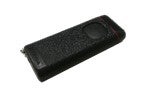 |
| 1987 | ISO Relay for automotive Power Seat Switch |
| 1988 |
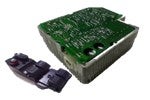 Japan's first! Power Window Switch Flasher relay for motorcycle |
| 1989 | Micro ISO Relay |

[[ Behind-the-scene story of the development. ]]
Although we are a supplier that does not belong to any car manufacturer's group and we entered the power window switch market late,
in 1989 we came up with the revolutionary "built-in switch concept" that was the first in the industry. This concept was completely new,
as switches were previously made of molded resin and metal, but instead were made by mounting a small built-in switch on a board.
At that time in the automotive industry, a supply chain was established in which switches were sourced from switch suppliers that belonged to the group,
but it was no easy feat for a completely unknown supplier outside the group to make inroads.
That is how big an impact the new concept proposed by our company had in terms of quality and cost. After that,
we incorporated many groundbreaking technologies, such as incorporating a snap action mechanism
in the built-in switch to enable further miniaturization of the switch and a fail-safe structure to prevent smoke and fire,
and evolved it into a long-lasting, highly reliable and safe, yet inexpensive product that was adopted by almost all Japanese car manufacturers.
Even after entering the market, we continue to focus on establishing differentiating technologies that keep us one step ahead of our competitors.
Our track record of development to date includes entrapment prevention technology that reverses the window glass when a finger or arm gets caught in the window,
submersion detection technology that allows the window glass to be lowered for a certain period of time even if a vehicle falls into the sea or river and people are trapped inside the vehicle,
and ripple control technology that enables simultaneous control of multiple windows to inexpensively add entrapment prevention functionality
to the four seats that are essential to preventing children from getting caught in the windows in the back seats.
In the future, we will continue to contribute to the realization of safety and security for end users by proactively proposing solutions to problems
and commercializing them ahead of our competitors in response to the increasing safety needs of the world.
| 1992 | Radio-controlled Keyless entry |
|---|---|
| 1993 | Auto sliding door controller 280 Relay for automotive |
| 1994 |
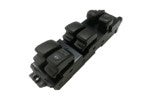 |
| 1998 |
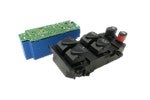 |
| 2000 |
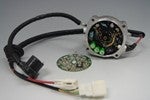 |
| 2002 |
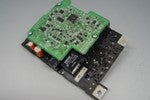 Power tailgate controller |
| 2003 | SMD Relay for automotive Tire Pressure Monitoring System |
| 2004 |
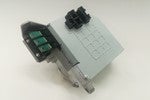 |
| 2005 |
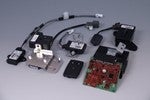 |
| 2006 |
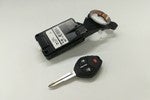 |
| 2007 | Adaptive Front Lighting System |
| 2008 |
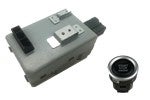 Passive entry and push engine start system |
| 2009 | Cell monitor unit for Electric vehicle Leakage sensor for Electric vehicle |

[[ Behind-the-scene story of the development. ]]
E-Clutch is an electronic control technology that is mainly installed on medium to large motorcycles,
and enables smooth starting and gear shifting without clutch lever operation (*) by automating the clutch control of manual vehicles.
This system is composed of a drive unit consisting of two small motors and gears, a clutch lever shaft,
and an engine control ECU (electronic control unit) that controls the engine in cooperation with the MCU based on data sent from various sensors.
(*) Manual operation is also possible.
This development was a first for us. We have been developing control units for motorcycles for nearly 10 years,
but only for body systems, and have never experienced powertrain systems such as this MCU. In addition,
many of the development processes and tools used were new to us, so it was difficult to see into the future.
Furthermore, we ended up delivering the prototype in half the time originally expected,
and even though we managed to deliver it, there were times when the integration with the customer's software did not work well,
and we had to stick to the customer to recover. Even in a difficult situation,
all the members came together and worked with the customer to develop the world's first system.
In previous developments, it was common for the software implementation to be completed before the prototype event held at the factory
in the latter half of the development period, but in this development, specifications changed at least 10 times,
and the software was delivered 30 times in total. We learned later that the customer had developed the software by changing the specifications more than 500 times over a 10-year period,
and we were reminded that this is a control application that was filled with many years of passion.
We are very grateful to have been able to develop this product together with such a passionate customer and release a product to the market that can contribute to end users around the world.
We will continue to pursue the "best match between people and cars" together with our customers.
| 2011 |
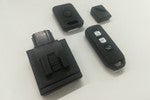 Two-way remote system for EV/PHV |
|---|---|
| 2013 |
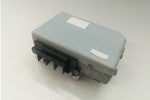 |
| 2017 | Smart entry system for motorcycle |
| 2018 |
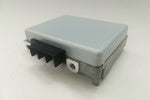 |
| 2019 | DC/DC converter for HEV |
| 2023 | Electric Power Steering Motor Power Pack * Products that combine a motor and an electronic control unit |
| 2024 |
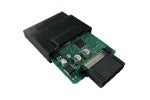 |
